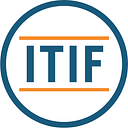Calixcoca: A Shot at Sobriety #Innovate4Health
Brazil’s Innovative Vaccine Aims to Revolutionize Addiction Medicine
This post is one of a series in the #Innovate4Health policy research initiative. #Innovate4Health is a joint research project by the University of Akron IP Center (UAIP), the Information Technology & Innovation Foundation (ITIF), and the Geneva Network. This project highlights how intellectual-property-driven innovation can address global health challenges. If you have questions, comments, or a suggestion for a story we should highlight, we’d love to hear from you. Please contact UAIP Research Fellow Douglas Park at dpark@uakron.edu for more information.
Tatyana Norman-Webler
Cocaine use disorder (CUD) is a significant public health problem with limited treatment options. While studies are underway, there is no FDA-approved pharmacologic therapy. The primary treatment is behavioral therapy.
But what if people battling CUD didn’t experience cravings at all? What if we could vaccinate against cocaine addiction, or any addiction, the way we vaccinate against Measles or the Flu?
With the visionary leadership of Frederico Garcia, a team of researchers at the Federal University of Minas Gerais in Brazil have created a novel anti-cocaine vaccine called Calixcoca.
After completing his doctoral studies in France in 2011, Dr. Frederico Garcia returned to his hometown of Belo Horizonte, Brazil, and witnessed firsthand the devastation of the crack cocaine epidemic. As a professor of psychiatry at the Federal University of Minas Gerais (UFMG), Garcia witnessed the devastating consequences of addiction in his community as local prosecutors penalized mothers suffering from cocaine use disorder (CUD) by taking their babies at birth. Garcia explained that this is not the time to separate a mother from her newborn baby because this moment is pivotal in the child’s development and often in the mother’s sobriety.
While Brazil does not produce cocaine, the country acts as a bridge for cocaine to travel from Peru, Colombia, and Bolivia to the United States and Europe. Brazil is one of the world’s largest consumers of cocaine, second only to the United States. Cocaine trafficking and addiction are so challenging and common that a district in Sao Paulo has been dubbed “Cracolândia” or “Crackland.”
The large number of Americans who also have substance abuse issues further illustrates the global seriousness of the problem. A 2022 survey found that 48.7 million Americans battled substance use disorder (SUD), and of those, 27.2 million battled drug use disorder (DUD). 5.3 million people reported using cocaine in 2022, with the highest use among “young adults aged 18 to 25.” A Kaiser Family Foundation poll found that two-thirds of Americans have been impacted by addiction, with 27% reporting that a family member had struggled with addiction to an illegal drug.
While the obvious solution is abstinence, people battling cocaine use disorder (CUD) are at a high risk of relapse due to the drug’s powerful effects on the brain and cravings that are exceptionally difficult to fight.
The goal of research into Calixcoca is to stimulate the production of antibodies that latch onto cocaine molecules and prevent them from crossing the blood-brain barrier, making them unable to reach the dopamine receptors that cause a feeling of euphoria. Basically, users would no longer get “high” from cocaine.
The tricky part is that cocaine by itself is not immunogenic — the molecules are too small for the immune system to recognize. Most vaccines would address this by attaching the cocaine molecules to larger proteins that the immune system can process, but that requires a prohibitively complex process of sterilization and refrigeration.
Instead, the Calixcoca team used large carrier molecules called calixarenes. They attached molecules that imitate the structure of cocaine molecules to these calixarene carriers to train the immune system to fight anything that looks like cocaine.
A 2021 study in mice demonstrated immunological potential and the ability of both calixarene carriers to bind to cocaine-like molecules to prevent them from reaching the brain. They have since successfully demonstrated the safety and effectiveness of the final product, UFMG-VAC-V4N2, i.e., Calixcoca, in monkeys. With 10 million dollars in government funding, the team hopes to begin human trials later this year.
The team plans to start with a group of 30 individuals in Phase I clinical trials and progress to 300 individuals in Phase II clinical trials. UFMG partnered with hospitals and clinics to recruit patients with CUD who have abstained from cocaine use because of their admission. Clinical trial participants would receive a total of three intramuscular doses of Calixcoca.
Clinical trials will monitor abstinence not only through regular urine screens, but also by sociological and psychological metrics. How soon were participants able to obtain a job? Have they reconnected with family?
Garcia hopes that anti-cocaine vaccines will not only treat individuals battling CUD but also serve as a preventative treatment for fertile women who battle CUD. He explained that only a quarter of pregnant women with CUD manage to stop using while pregnant.
Intellectual property has been integral to Calixcoca’s development. With the help of UFMG’s technology transfer office, Garcia’s team secured a patent to protect their novel anti-cocaine molecules from the Brazilian Patent Office in 2017 (BR 10 2017 015955 8), and their patent is pending in the U.S. Garcia hopes that patent protection and successful Phase I trials will help raise more funding from private firms. Calixcoca recently won the Euro Health Innovation Award in October 2023, securing the top prize of 500,000 euros.
The Brazilian government sees the potential in this research. Garcia shared that the government recently invested 1 billion dollars in building a state-of-the-art biopharmaceutical research center. In 2004, Brazil enacted the Innovation Law (Law №10973/04), modeled after the U.S. Bayh-Dole Act, which incentivizes innovation and public-private collaboration by affording patent protection to publicly funded research at universities.
The law was last amended in 2018 to create mechanisms that bring “more legal security to the parties around the technologies that are jointly developed.” Sao Paulo is already known as the “largest innovation ecosystem in Latin America,” and with the help of federal investment, robust patent protections, and UFMG’s technology transfer program, Garcia hopes that Brazil will become the world’s leading biopharmaceutical pipeline.
Garcia noted that the drug that revolutionized cardiovascular treatment — Captopril and the derivative family of ACE-Inhibitors that followed — was invented in Brazil using venom from a poisonous Brazilian viper. Now, Frederico Garcia and the Calixcoca research team hope to transform millions of lives by revolutionizing addiction medicine and transforming Belo Horizonte into a biopharmaceutical innovation hub.

